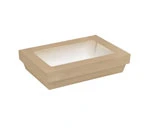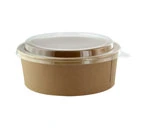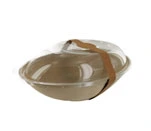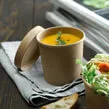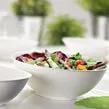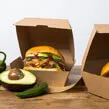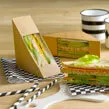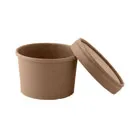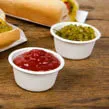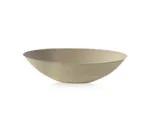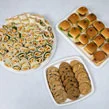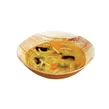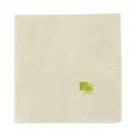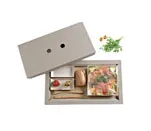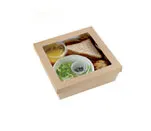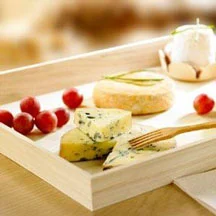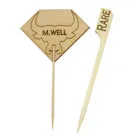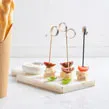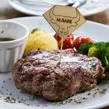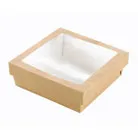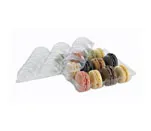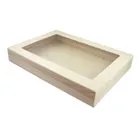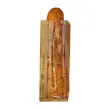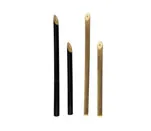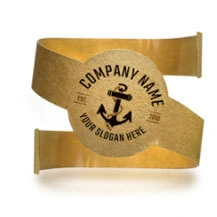Doggie Bags: A Sign of Awareness Not Embarrassment
Posted by Adam Merran on Dec 1st 2014
When is the last time you asked to take leftovers home from a restaurant? Today, more and more chefs and restaurateurs do not want to see good food go to waste, and encourage the idea of diners taking food home that they haven’t finished. But it wasn’t always this way, and to this day, many diners are still not comfortable with the practice.
 According to the Smithsonian Institute’s blog Food & Think, the custom of using “doggie bags” started in the U.S. in the 1940’s during the Second World War, when pet owners were encouraged to feed table scraps rather than pet food to their dogs. And in 1943, San Francisco cafes started an initiative against animal cruelty by offering patrons “Pet Pakits” — cartons designed specifically to carry home leftovers for their pets. Around that same time, one Seattle restaurant provided diners with waxed paper bags labeled “Bones for Bowser.” Restaurants around the country started to follow suit, and by the mid 1950’s, doggie bags went into production. Before long, people were requesting doggie bags to take home food for themselves rather than their pets.
According to the Smithsonian Institute’s blog Food & Think, the custom of using “doggie bags” started in the U.S. in the 1940’s during the Second World War, when pet owners were encouraged to feed table scraps rather than pet food to their dogs. And in 1943, San Francisco cafes started an initiative against animal cruelty by offering patrons “Pet Pakits” — cartons designed specifically to carry home leftovers for their pets. Around that same time, one Seattle restaurant provided diners with waxed paper bags labeled “Bones for Bowser.” Restaurants around the country started to follow suit, and by the mid 1950’s, doggie bags went into production. Before long, people were requesting doggie bags to take home food for themselves rather than their pets.
Other sources say that the doggie bags first appearance was in Rome in the 6th century BC. When invited to a banquet, ancient Romans would bring a napkin, and to compliment the host, take home some of the dinner wrapped in the napkin. In the Middle Ages that changed, and leftovers went to kitchen staff, servants, and then the garbage. Still today, the idea of doggie bags in Italy has not really caught on, as Italians tend to look at food left on the plate as “scraps” rather than “leftovers.”

Here in the U.S., it’s commonplace and accepted to request a doggie bag after a meal. One reason might be because many restaurants here tend to serve oversize portions to give customers the idea that they are getting good value for their dollar. Americans are the first to recycle their waste and look at leftover food as a chance to enjoy a meal twice. Americans, unlike many Europeans, also find no shame in asking to take food home — they work hard and expect value for their dollar. For environmentally conscious diners, it would be more embarrassing to leave food on the plate that would end up in the trash, than to ask for a doggie bag.
In Europe there has always been a collective embarrassment about asking for doggie bags. As a result, this has hindered British and European diners from tackling the issue of waste reduction at the restaurant table. There has been somewhat of a positive cultural shift over the past 4 or 5 years, and European restaurateurs and diners are catching on in their efforts to minimize food waste by way of taking food home. New movements have started to promote the benefits, and the opinion on doggie bags is slowly shifting.
Research from a 2010 food waste study in the UK showed that on average, a single UK restaurant produced 21 tons of waste annually, and 30% of that waste came off of diners’ plates. As well as the cost to the environment, the waste was costing restaurants and diners a fortune. To tackle this problem, in 2011, the Sustainable Restaurant Association’s started the Too Good To Waste campaign in London. This campaign encourages diners to be “lovers, not leavers,” and provides participating restaurants with recyclable “Doggy Boxes.” Here are what some chefs in London have to say about the campaign, and bringing home leftovers:
- Henry Dimbleby, Leon: “…gives consumers a chance to do something about the huge problem of food waste. Don’t be shy about asking to take leftover food home with you –you paid for it, it’s yours.”
- Sriram Avlur, The Ouilon – “The amount of food wasted in London restaurants is a scandal. As restaurateurs it’s in all our interests to do something about it. [The campaign] will not only be good for the environment but also makes real business sense.”
- Bruno Loubet, Bistro Bruno Loubet – “As a chef I can’t stand good food going to waste. Our portions are quite generous so I would always welcome a customer’s request to take home anything they can’t finish.”
To see what more London chefs have to say, click here.
The French too still remain resistant to doggie bags – their feelings rooted in history and culture. According to a recent New York Times article on November 13, “Brushing Off a French Stigma That Doggie Bags Are For Beggars,” despite the rising consciousness about food waste, diners are still more likely to take home leftover wine rather than food. As part of a recent drive to cut down on food waste in France, a campaign has started in the south-central region to promote the use –and acceptance – of doggie bags in local restaurants. Findings have showed that though diners might be in support of the idea, they are still hesitant to actually ask for the leftovers. They don’t want to look stingy. Plus, the general impression seems to be that “doggie bags are an American thing” and are a result of the gigantic portions served here in the U.S. In their attempt to remarket the idea, they are rebranding the doggie bag and using the term “gourmet bag” instead. The new tagline: “It’s so good, I’ll finish it at home!”
There is also a campaign in Sweden that started in 2011 called Slang Inte Maten, or Do Not Throw Away Your Food. The goal of this campaign is also to increase awareness of food waste and includes a promotion to prevent waste in restaurants by using doggie bags. At that time, according to a survey, 8 out of 10 Swedes never took home their leftovers because they were embarrassed to ask, and also because it was inconvenient to carry home. As part of the campaign, Swedish rapper Dogge Doggelito from the Latin Kings made a promotional video to demonstrate to Swedes that there’s nothing wrong with bringing home leftovers when you can’t finish your meal. In the video below, Dogge overhears a couple arguing about something that the man finds embarrassing, and takes for granted that they want his autograph – it turns out the woman just wants a doggie bag.


Packnwood offers many modern day “doggy box” options for leftovers and foods to go.
Click here to see Packnwood’s complete Takeout Collection.

